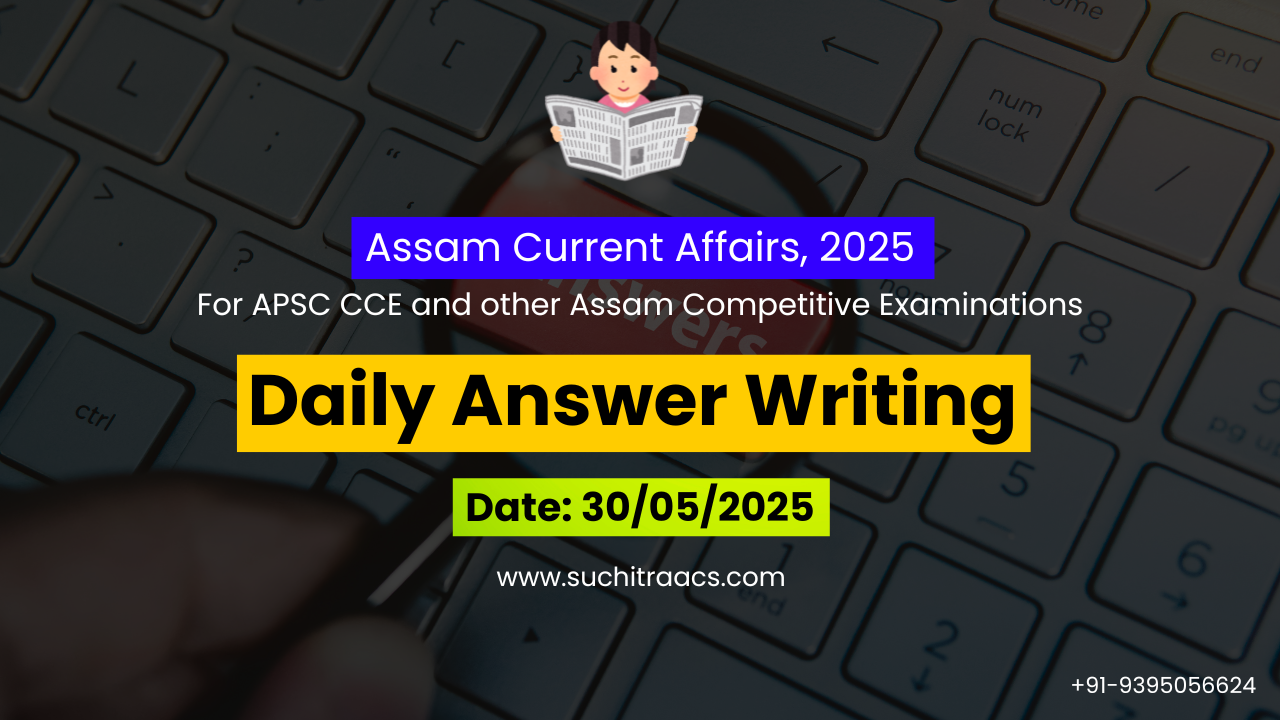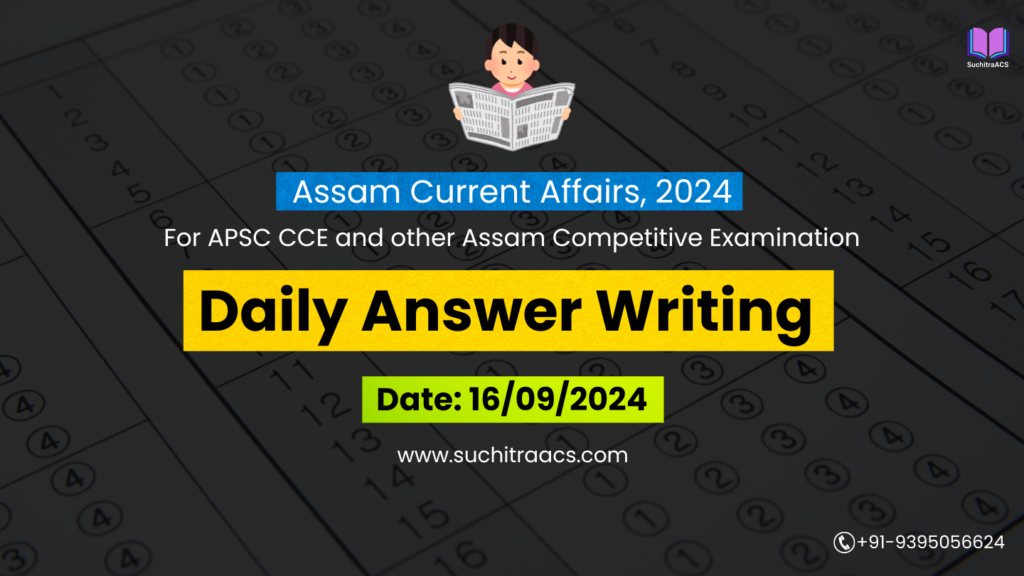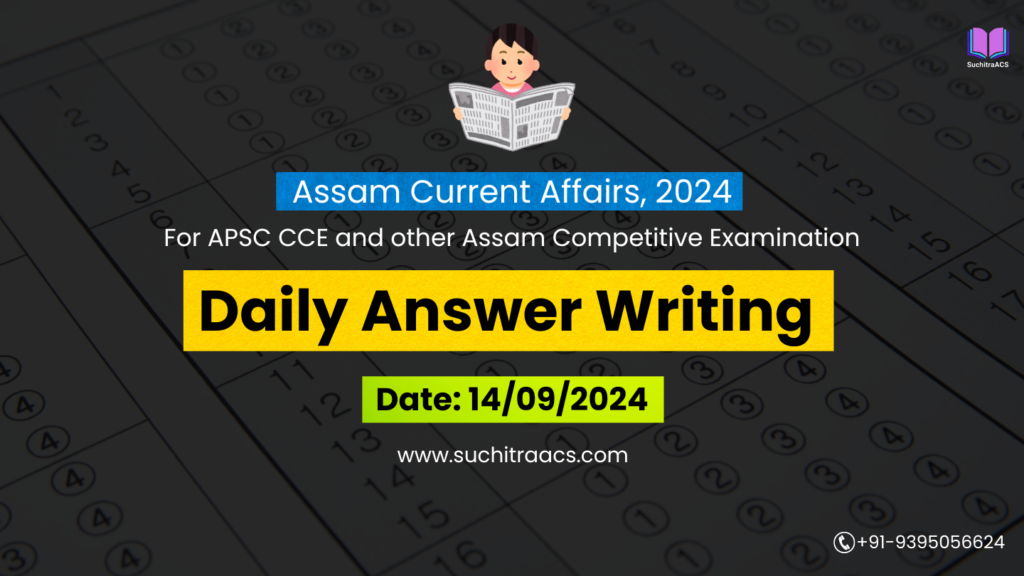APSC Answer Writing (Daily) based on Assam Tribune – 30/05/2025
For APSC CCE and other Assam Competitive examinations aspirants, practicing Daily Answer Writing is vital. This blog covers the most important Main question and its model Answer from the Assam Tribune today (30-05-2025).
📝 Mains Question (GS Paper 2 / GS Paper 3 – International Relations | Environment | Disaster Management):
Q. China’s plan to construct a massive hydropower dam on the Yarlung Tsangpo (Brahmaputra) poses serious challenges to India’s water security, especially in Assam and the Northeast. Critically examine the geopolitical, environmental, and disaster-related concerns arising from such upstream river projects. Suggest measures India can take to mitigate these risks.
📘 Model Answer
Introduction
The Brahmaputra River, known as Yarlung Tsangpo in Tibet, originates in China and flows through India and Bangladesh, making it an important transboundary river in South Asia. China’s proposed 60,000 MW hydropower dam project in the Great Bend region of Tibet has raised alarm bells in India, particularly in the northeastern states like Assam, which lie downstream. With no binding water-sharing treaty between India and China, the situation underscores serious concerns across geopolitical, ecological, and disaster preparedness dimensions.
Geopolitical Concerns
- Absence of a water-sharing treaty between India and China leaves downstream nations vulnerable to unilateral upstream projects.
- The dam could be used by China as a strategic tool to control water flows during conflict or negotiation scenarios.
- China’s non-participation in regional river basin mechanisms (e.g., Mekong Committee) reveals a pattern of water unilateralism.
- Could set a precedent for other contested rivers (e.g., Indus, Teesta), complicating India’s water diplomacy further.
Environmental and Ecological Concerns
- Potential reduction in water flow during lean seasons could affect irrigation, fisheries, and drinking water supply in Assam.
- Changes in sediment load and river ecology could devastate the floodplains and wetlands of the Northeast.
- Impact on biodiversity in sensitive regions like Kaziranga National Park and Majuli Island, already under threat from erosion.
Disaster and Climate Risks
- Sudden release of water or dam failure could trigger catastrophic flash floods in Assam and Arunachal Pradesh.
- Construction in a high seismic zone increases the risk of structural failure.
- Increased unpredictability of flow patterns may impair Assam’s disaster preparedness and flood management systems.
- Climate change could exacerbate river flow variations, compounding dam-induced risks.
Measures India Can Take
A. Diplomatic and Legal Responses
- Push for a bilateral water-sharing agreement under the principle of “equitable and reasonable utilization.”
- Raise the issue at multilateral forums such as UN Watercourses Convention, even if India is not yet a signatory.
- Use Track II diplomacy involving experts, think tanks, and academics to foster dialogue.
B. Technical and Infrastructural Steps
- Accelerate construction of multi-purpose reservoirs and flood moderation dams in Brahmaputra’s tributaries.
- Invest in real-time hydrological data and satellite surveillance to monitor dam construction and water discharge.
- Strengthen early warning systems and disaster readiness protocols in downstream regions.
C. Regional Cooperation
- Form a sub-regional river basin cooperation framework with Bangladesh and Bhutan to present a collective riparian voice.
- Align with Indo-Pacific environmental security initiatives to balance China’s upstream influence.
Conclusion
China’s megadam project on the Yarlung Tsangpo is more than a hydropower issue—it is a challenge to India’s environmental sovereignty, regional stability, and disaster resilience, particularly in Assam. While direct confrontation is unlikely, India must adopt a multi-pronged strategy combining diplomacy, preparedness, and sustainable infrastructure to safeguard its interests and the lives of millions in its northeastern states.ing constitutional morality over expedient governance is the key to a just, secure, and rights-respecting society.
✨ Looking for top-quality APSC Mains Guidance with Personalised Mentor?

🔔 Join Our WhatsApp Study Group!
For exclusive access to premium quality content, including study materials, current affairs, MCQs, and model answers for APSC CCE and other Assam competitive exams.
Click here to join: SuchitraACS Study WhatsApp Group
📚 Want to know more about SuchitraACS’s most affordable courses?
Click here to know more: SuchitraACS Courses for APSC CCE and Assam Competitive Examinations




